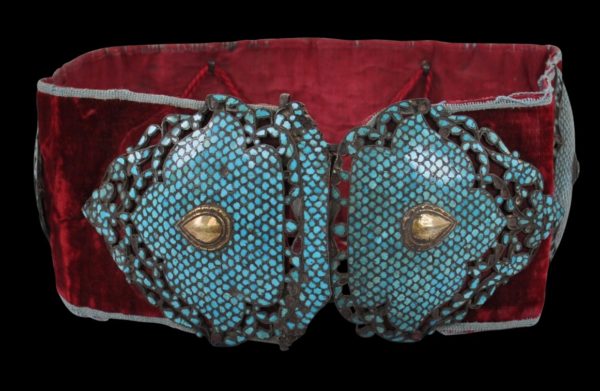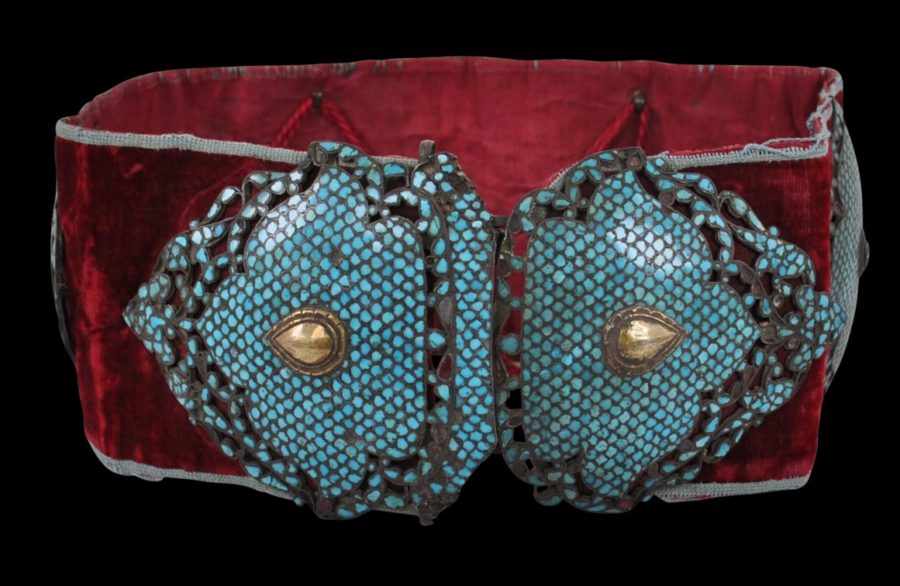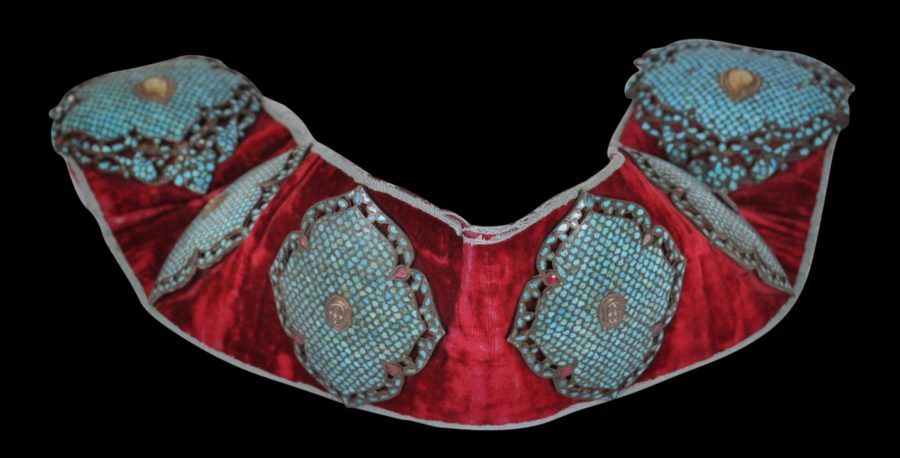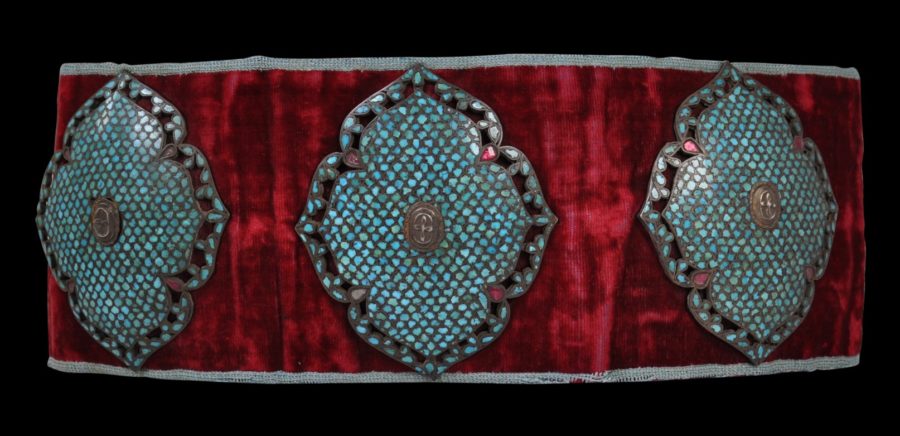This spectacular belt comprises a single, wide, red velvet strip to which six silver or silver alloy, domed plaques have been attached. The plaques are of quatrefoil form, and are inlaid with dozens of turquoise tiles all in box settings in a manner reminiscent of smoothed fish scales. Small tear-shaped red stones or red-foil backed glass also decorate the outer edges of the panels but most of these now are missing.
Each panel has a central silver stud. The two main plaques which comprise the buckle for the belt (they close with a hook-and-eye mechanism) are decorated with central gilded (gold plated) silver tear-shaped cartouches. These larger plaques also are pierced around the edges adding to their decorative, arabesque nature.
The use of turquoise, gilt, and red velvet in this manner is suggestive of Bukharan provenance in Central Asian, and most probably is from the Tajiks and settled Uzbeks in the area. Indeed, Kalter (1997, p. 308) says that only in Bukara did men of high standing have fabric belts with metal plaques that were studded with turquouise.
Central Asian Art (2003, p. 138) illustrates a very similar belt in the Fine Arts Museum of the Uzbekistan Republic in Tashkent.
Similar turquoise inlay can be seen on the sheaf of a sabre from Khuqand in Central Asia and illustrated in Piotrovsky & Pritula (2006, p. 216), on a dish attributed to Bukhara and illustrated in Piotrovsky & Pritula (2006, p. 218), and on the fittings for the bridle of a noble’s horse from Bukhara, illustrated in Fihl (2010, p. 583).
Such a belt would have been worn by a khan (local ruler) or another male member of his family.
References
Central Asian Art, Sirrrocco, 2003.
Fihl, E., Exploring Central Asia, Volumes 2, University of Washington Press, 2010.
Kalter, J. (ed.), Uzbekistan: Heirs to the Silk Road, Thames & Hudson, 1997.
Piotrovsky, M. & A.D. Pritula (eds.), Beyond the Palace Walls: Islamic Art from the State Hermitage Museum/Islamic Art in a World Context, National Museum of Scotland, 2006.






